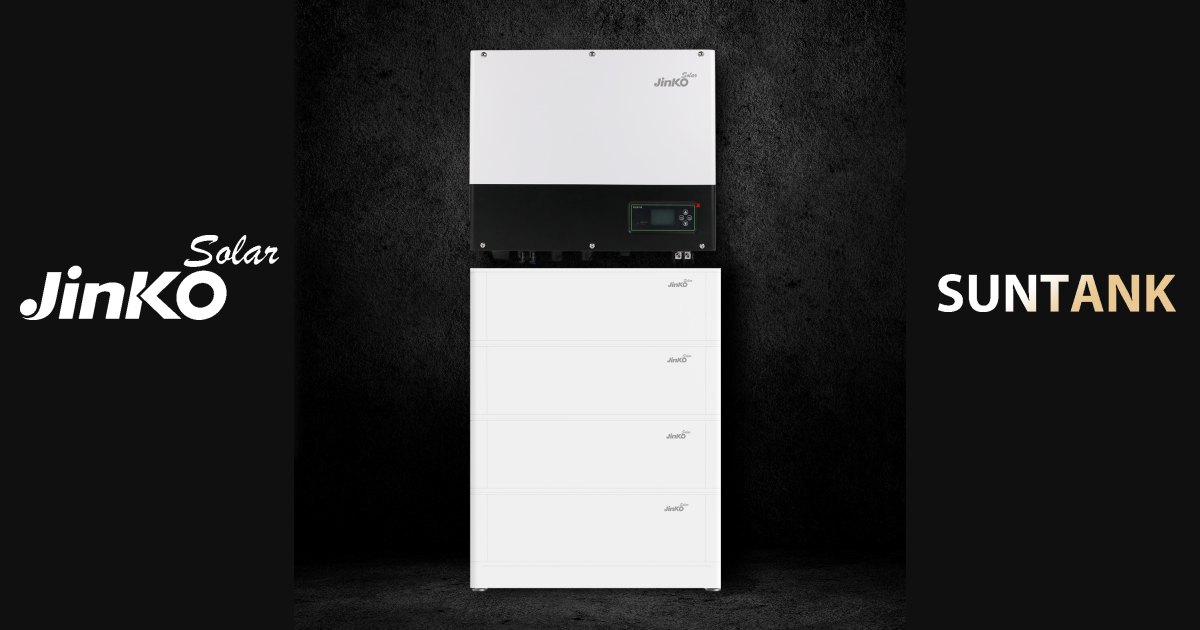
JinkoSolar announced on the weekend its modular SunTank home battery system has been launched in Australia – but the company was a little light on detail.
Commenting on the launch, Country Manager of JinkoSolar APAC Thomas Bywater said:
“As one of the most mature photovoltaic markets in the world, we believe that energy storage will become an indispensable part of the Australian market. JinkoSolar will also make every effort to lead the Australia photovoltaic market into a new PV+ era.”
JinkoSolar SunTank Battery Specifications
What could be gleaned from the announcement in terms of specifications:
- Offers both AC & DC-coupling methods.
- 5kW power output.
- Capacity of 2.56kWh to 25.6kWh.
- Incorporates a single-phase hybrid inverter.
- IP65 rated.
- 10 years product warranty.
- Operating temperature range from -10°C~+50°C.
- Backup supply to an emergency circuit.
Eager for more information, I headed out to the Australian JinkoSolar website and ran a search, which produced this result:

Frustrating, but not surprising. It’s not uncommon for solar manufacturers to announce the launch or availability of new products without having relevant and detailed information immediately available and easily accessible from their web sites.
JinkoSolar’s global site wasn’t much better; but the datasheets archive proved useful. It indicated the system is made up of two components – a SunTank JKS-3~6HLVS-ABI inverter and JKS-B5150-BI battery modules. Some further information on the SunTank battery modules:
- Battery chemistry: Lithium Iron Phosphate (LFP)
- Usable capacity per module: 2.30kWh – so the “25.6kWh” mentioned above is actually a whisker over 23kWh usable capacity.
- Module dimensions: 650 x 260 x 185 mm
- Module weight: 28kg
- For the 5kW power output, at least 4 modules are required (10.24kWh) + the JKS-5HLVS-ABI inverter
- While the battery discharge operating temperature range is -10°C ~ 50°C, battery charge range is 0°C ~ 50°C.
JinkoSolar SunTank Battery Backup Power
With regard to the inverter and backup power, the JKS-5HLVS-ABI can provide 4kW and switchover time is <10ms. In its announcement, Jinko mentions (bolding mine):
“The EPS Output can provide a backup supply to an emergency circuit during short-term grid outages. If the grid is lost, the system would switch to backup mode and AC output is supplied via the EPS LOAD port using energy from PV and battery.”
“EPS” = Emergency Power Supply
How Big/Heavy Is A SunTank Battery System?
In a 12.8kWh configuration (11.52kWh usable capacity), a JinkoSolar SunTank system would require 5 battery modules. The stack along with the hybrid inverter would be around 1.37 metres high (added: not including gap between inverter and battery) and weigh in at approximately 167kg. For the full 25.6kWh (23kWh), the stack would be approximately 2.27m high and weigh approximately 307kg. That’s a mighty tall battery – but it’s assumed the inverter can be placed alongside the SunTank battery module stack rather than installed above it.
JinkoSolar make pretty good solar panels at a comparatively low pricing point, which has made them very popular in Australia among homeowners and installers1. It will be interesting to see how the SunTank battery system fares in Australian conditions, reviews from owners, and what pricing it comes in at.
Related: Compare solar battery prices and specifications
Footnotes
- JinkoSolar took out 2nd place in the 2022 SolarQuotes Installers Choice Awards – best budget solar panels category. ↩

 RSS - Posts
RSS - Posts



Hi Im still unsure about this to know if I have long periods of grid failure ie past fires.
“The EPS Output can provide a backup supply to an emergency circuit during short-term grid outages. If the grid is lost, the system would switch to backup mode and AC output is supplied via the EPS LOAD port using energy from PV and battery.”
I guess what I hanging out for is a setup that becomes “off grid ” for as long as the grid is down. Unlike say Tesla Power Wall which would only allow you to use the charge in the battery but not recharge from the panels, when the grid is down.
I appreciate that the solar systems have to be isolated from the grid to protect those working to fix it etc. So what does ” short term” actually mean?
If configured correctly a Powerwall 2 will charge from your PV panels while in blackout mode. I believe Finn’s PW is similarly set up.
I’m not an expert and pls correct me if I am mistaken. The Fronius Gen24 plus inverters have multiflow tech. It will let you use power from the PV and battery AND charge/top up battery in the event of grid failure. Perhaps something to look at.
Re : Unlike say Tesla Power Wall which would only allow you to use the charge in the battery but not recharge from the panels, when the grid is down.
My Powerwall II with backup is wired so that the batteries recharge when the grid is down, at least that’s what the installer assured me off. Have not had a long enough blackout to test this in practice. The App will not show this when the grid is down, the installer explained it is the way it is wired.
I uncertain of the current Tesla Wall 2 but back when there was only the first Tesla Power Wall it only allowed to use the charge that was already on it. I waited so long with my deposit that Tesla came out with the 2nd. I cancelled my deposit and put it on that but after speaking with the tesla company office (i assumed here in Oz) was told it was an extra $700 for the “back ability” butagain couldn’t recharge until grid was back! So i pulled out. And still have cold feet when getting ideas on batteries again.
I’m curious whether by the time home batteries become genuinely economically sensible, the grid, generation and collective storage (including EV batteries) will have evolved to a point where it may almost be redundant?
I’m currently at the maximum inverter capacity allowed with my system (10kW). Interested to know if when DC coupled the inverter capacity of the battery’s inverter is likely to be counted and therefore put me over the maximum total inverter capacity? Can the battery inverter be bypassed and the existing system one used instead to avoid this?
It looks a white label from Growatt. isn’t it?
Well spotted Ryan. I think you are correct mate.
Why Jinko would jump into bed with Growatt is baffling to me.
That’s entirely made by Growatt. It’s just a brand change, that’s all.